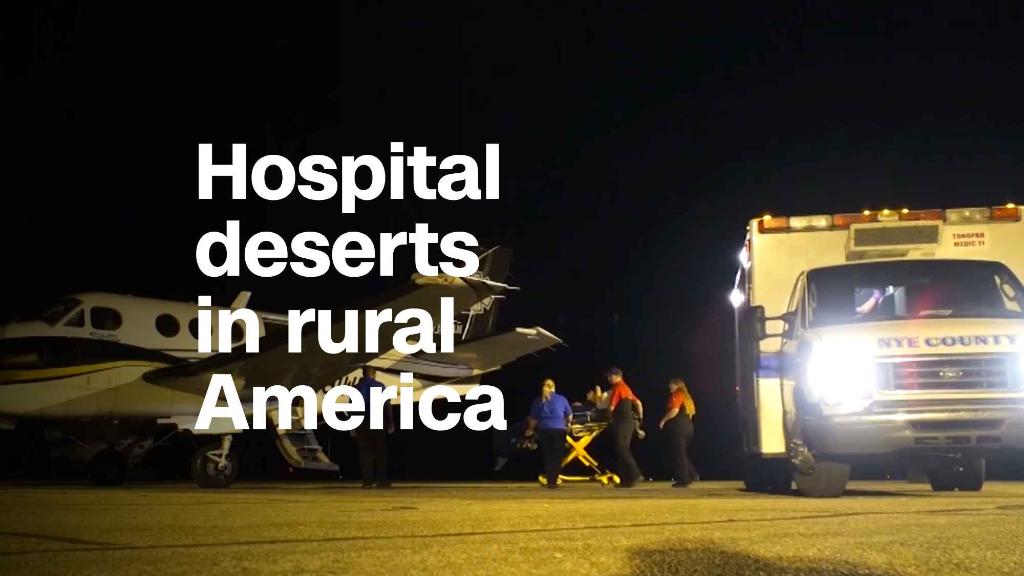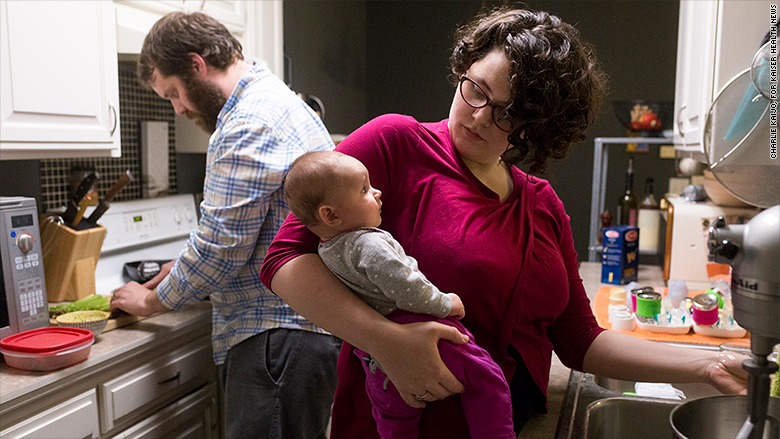
Laura Cameron, three months pregnant, fell in a parking lot and landed in the emergency room in May. She was on her back — in pain and attached to a saline drip — when a hospital representative came to discuss her bill.
Though both Cameron and her husband, Keith, have insurance, her ER visit would likely cost about $830, the rep said. If that sounded unmanageable, she added, the couple could take out a loan through a bank that had partnered with Mercy Hospital.
She was "fairly forceful," recalled Cameron, 28, who lives in Fayetteville, Arkansas. "She certainly made it clear she preferred we pay then, or we take this deal."
Hospitals are increasingly offering "patient-financing" strategies, cooperating with banks and other financial institutions to provide on-the-spot loans to ensure patients pay their bills.
Private doctors' offices and surgery centers have long offered such no- or low-interest assistance for services not covered by insurance or to patients paying for an expensive test or procedure with a fixed price. But health experts say promoting bank loans at hospitals and, particularly, in emergency departments, raises concerns.
Related: How Trump plans to cut prescription drug prices
For one thing, the cost estimates provided are likely based on a hospital's list price and may be far higher than the negotiated rate most insurers ultimately pay. Patients may feel they have no choice but to sign up since they need treatment — and the quick process means they may well be signing on for expenses they cannot afford.
What initially seems like a tempting solution may not be a great bargain, suggests Mark Rukavina, an expert in medical debt and billing at Community Catalyst, a Boston-based advocacy group.
"If you pay zero percent interest on a seriously inflated charge, it's not a good deal," he said.
Yet it takes stepping back to understand that, which isn't always easy in an era of higher deductibles, narrower provider networks and patients shouldering larger portions of their medical expenses. In 2016, consumers spent $352.5 billion out-of-pocket on health care, according to federal estimates.
Many patients have trouble coming up with cash for those bills, meaning hospitals have a harder time collecting. That's why about 15% to 20% of facilities across the country have teamed up with lenders, according to Bruce Haupt, chief executive of the loan-servicing company ClearBalance. He expects that percentage to grow, as do many industry analysts.
The process begins with the hospital estimating a patient's costs, which factors in insurance. A billing representative then lays out payment plans, often while the patient is still being treated. A loan sign-up can occur right away, often without a credit check.
Once back home, the individual writes monthly checks to the lender, which has paid the hospital — though keeping a designated percentage of the bill as its fee.

Proponents call it a useful alternative to medical credit cards, which can surprise users with high interest rates. The partnerships allow hospitals to offload the headache of administering monthly payment plans and pursuing collection.
Federal law requires lenders be transparent about their loan terms — the interest rate, payment schedule and other charges — and that protection extends to patients signing up in the hospital.
Still, an on-the-stretcher pitch leaves little opportunity for due diligence.
"The hospital potentially is charging the patient the full, what I would call 'whack rate' for their care," said Kathleen Engel, a research professor of law at Boston-based Suffolk University and an expert in consumer credit and mortgage finance. "They try to collect the debt."
Johns Hopkins University professor Gerard Anderson, an expert on health-care pricing, has a related concern. "What's the charge [lenders are] using to determine what's a reasonable amount to pay?" he asked.
Related: Growing number of suburban poor discover health care's nowhere land
At Florida-based Orlando Health, which works with ClearBalance, loans typically range from $3,000 to $7,000, said Michele Napier, the health system's chief revenue officer. The most debt a patient has taken — about $13,000 — was because of high-deductible insurance, she said.
"All of a sudden a catastrophic event occurs, and to have $13,000 in the bank account is a lot to ask," Napier noted.
Low-income patients without insurance likely will not need loans to finance large bills,because they should quality for aid from the hospital, or be treated as charity care, Napier said.
It's a conversation that starts at registration, she added. "If a patient shares with us that they have no resources or limited resources to pay, we will provide information on our financial assistance and other programs including screening them for Medicaid."
Default rates vary, with 20% rates seen in places such as Texas and Louisiana. In other areas, about 6% of patients ultimately cannot pay their loans.
"Some of these people are destined to default," Engel said. "If you have to get a loan for $500 for medical care, that means you are really living at the margins."
Laura Cameron was suspicious of her $830 estimate, since she had good insurance from her subject librarian job at the University of Arkansas. She and her husband, a cancer survivor, had extensive experience with high medical bills. Nobody had ever asked either to pay upfront, even when he owed tens of thousands for his treatment.
"It just felt so uncomfortable to us that they would try to push us through a bank, which is designed to make a profit," Cameron said.
The couple declined Mercy Hospital's loan option and refused to discuss payment until she was home and received her insurance statement.
A spokeswoman for the Rogers, Ark., facility said loans are a consumer-friendly option. "We've heard from many patients that they appreciate receiving this information as soon as possible because it relieves their worry about paying," Sonya Kullmann said.
In the end, the Camerons owed $150 — the co-payment for her emergency visit. "It felt to us like it could screw someone over who wasn't aware about how to work that system," Laura said.
But she remembers feeling intimidated as she lay on the gurney. "It can be scary feeling like you owe someone money."
Survival tips on medical credit
Consumers — especially those whose insurance doesn't cover a particular doctor or treatment — can end up liable for hundreds or thousands of dollars in medical bills. How do you ensure you're getting a good deal? Here's advice from financial experts.
Wait. Don't commit to a payment plan until you're home and recovered. A loan may be the best option, but it's hard to make a good decision under pressure.
Do your research. Some organizations focus on helping patients pay medical bills. Nonprofit hospitals are legally required to provide financial assistance for certain low-income patients — see if you qualify.
Bargain. Find out what Medicare, which covers elderly and disabled people, pays for your treatment. Don't pay above that amount.
Kaiser Health News (KHN) is a nonprofit news service covering health issues. It is an editorially independent program of the Kaiser Family Foundation that is not affiliated with Kaiser Permanente.
